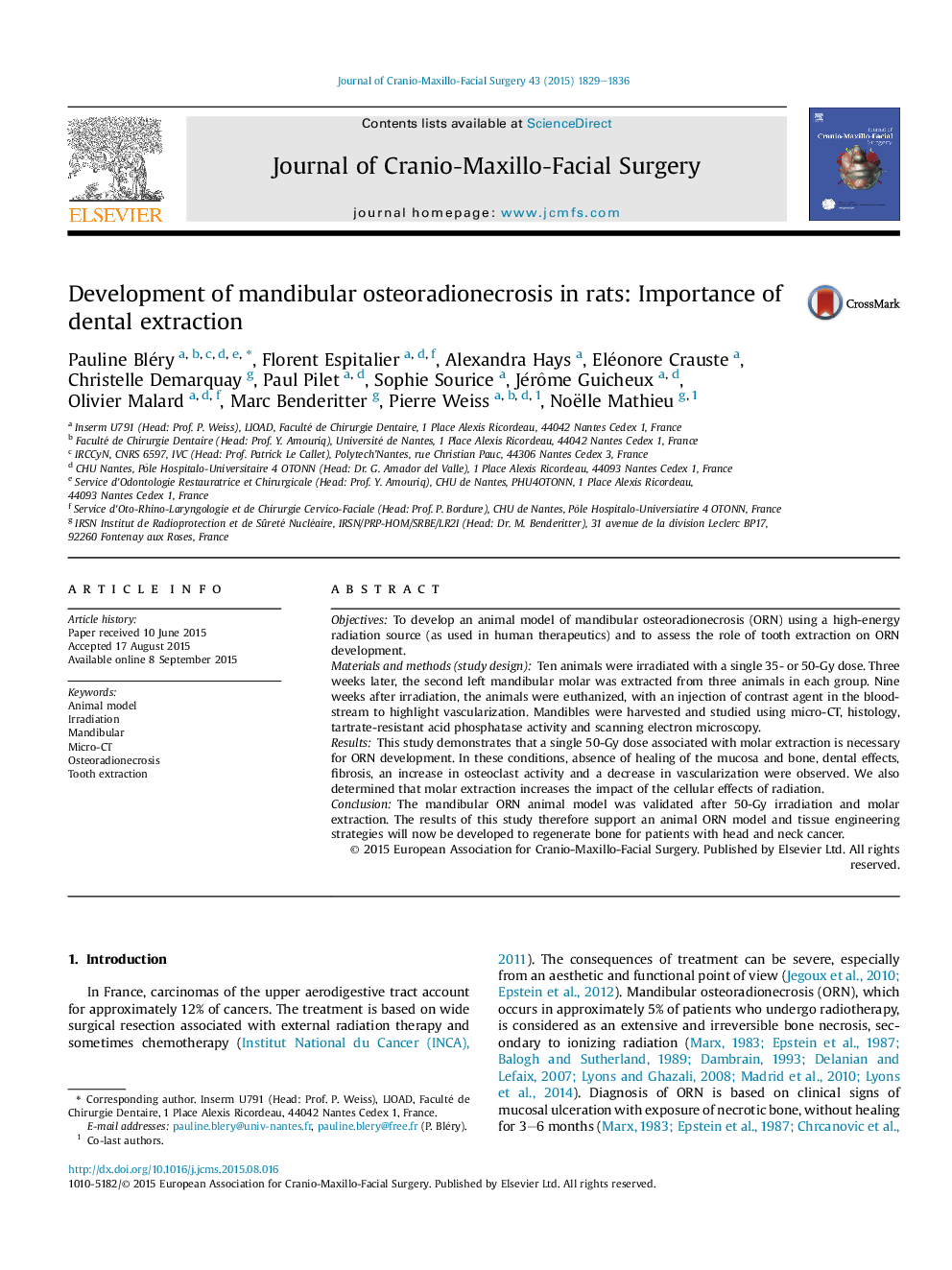| Article ID | Journal | Published Year | Pages | File Type |
|---|---|---|---|---|
| 3143052 | Journal of Cranio-Maxillofacial Surgery | 2015 | 8 Pages |
ObjectivesTo develop an animal model of mandibular osteoradionecrosis (ORN) using a high-energy radiation source (as used in human therapeutics) and to assess the role of tooth extraction on ORN development.Materials and methods (study design)Ten animals were irradiated with a single 35- or 50-Gy dose. Three weeks later, the second left mandibular molar was extracted from three animals in each group. Nine weeks after irradiation, the animals were euthanized, with an injection of contrast agent in the bloodstream to highlight vascularization. Mandibles were harvested and studied using micro-CT, histology, tartrate-resistant acid phosphatase activity and scanning electron microscopy.ResultsThis study demonstrates that a single 50-Gy dose associated with molar extraction is necessary for ORN development. In these conditions, absence of healing of the mucosa and bone, dental effects, fibrosis, an increase in osteoclast activity and a decrease in vascularization were observed. We also determined that molar extraction increases the impact of the cellular effects of radiation.ConclusionThe mandibular ORN animal model was validated after 50-Gy irradiation and molar extraction. The results of this study therefore support an animal ORN model and tissue engineering strategies will now be developed to regenerate bone for patients with head and neck cancer.
